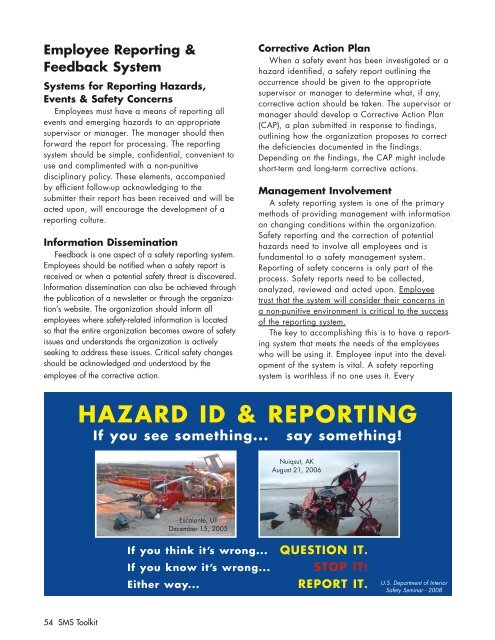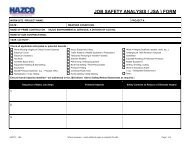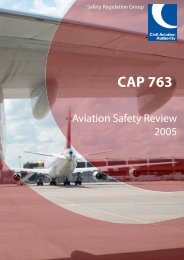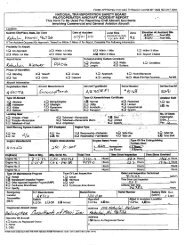International Helicopter Safety Team Safety Management System Toolkit
IHST - Safety Management Toolkit - Skybrary
IHST - Safety Management Toolkit - Skybrary
- No tags were found...
You also want an ePaper? Increase the reach of your titles
YUMPU automatically turns print PDFs into web optimized ePapers that Google loves.
Employee Reporting &<br />
Feedback <strong>System</strong><br />
<strong>System</strong>s for Reporting Hazards,<br />
Events & <strong>Safety</strong> Concerns<br />
Employees must have a means of reporting all<br />
events and emerging hazards to an appropriate<br />
supervisor or manager. The manager should then<br />
forward the report for processing. The reporting<br />
system should be simple, confidential, convenient to<br />
use and complimented with a non-punitive<br />
disciplinary policy. These elements, accompanied<br />
by efficient follow-up acknowledging to the<br />
submitter their report has been received and will be<br />
acted upon, will encourage the development of a<br />
reporting culture.<br />
Information Dissemination<br />
Feedback is one aspect of a safety reporting system.<br />
Employees should be notified when a safety report is<br />
received or when a potential safety threat is discovered.<br />
Information dissemination can also be achieved through<br />
the publication of a newsletter or through the organization’s<br />
website. The organization should inform all<br />
employees where safety-related information is located<br />
so that the entire organization becomes aware of safety<br />
issues and understands the organization is actively<br />
seeking to address these issues. Critical safety changes<br />
should be acknowledged and understood by the<br />
employee of the corrective action.<br />
Corrective Action Plan<br />
When a safety event has been investigated or a<br />
hazard identified, a safety report outlining the<br />
occurrence should be given to the appropriate<br />
supervisor or manager to determine what, if any,<br />
corrective action should be taken. The supervisor or<br />
manager should develop a Corrective Action Plan<br />
(CAP), a plan submitted in response to findings,<br />
outlining how the organization proposes to correct<br />
the deficiencies documented in the findings.<br />
Depending on the findings, the CAP might include<br />
short-term and long-term corrective actions.<br />
<strong>Management</strong> Involvement<br />
A safety reporting system is one of the primary<br />
methods of providing management with information<br />
on changing conditions within the organization.<br />
<strong>Safety</strong> reporting and the correction of potential<br />
hazards need to involve all employees and is<br />
fundamental to a safety management system.<br />
Reporting of safety concerns is only part of the<br />
process. <strong>Safety</strong> reports need to be collected,<br />
analyzed, reviewed and acted upon. Employee<br />
trust that the system will consider their concerns in<br />
a non-punitive environment is critical to the success<br />
of the reporting system.<br />
The key to accomplishing this is to have a reporting<br />
system that meets the needs of the employees<br />
who will be using it. Employee input into the development<br />
of the system is vital. A safety reporting<br />
system is worthless if no one uses it. Every<br />
HAZARD ID & REPORTING<br />
If you see something... say something!<br />
Nuiqsut, AK<br />
August 21, 2006<br />
Escalante, UT<br />
December 15, 2005<br />
If you think it’s wrong...<br />
If you know it’s wrong...<br />
Either way...<br />
QUESTION IT.<br />
STOP IT!<br />
REPORT IT.<br />
U.S. Department of Interior<br />
<strong>Safety</strong> Seminar - 2008<br />
54 SMS <strong>Toolkit</strong>







